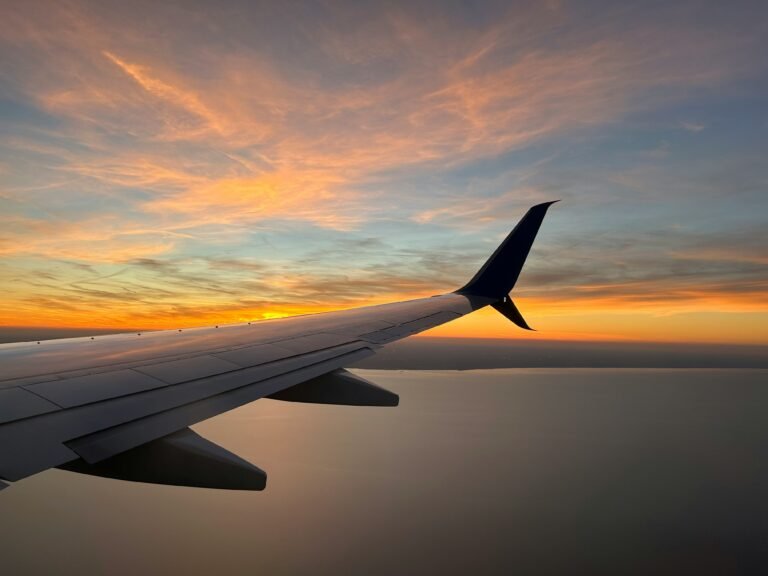Introduction
For years, travelers have known Agoda as the go-to platform for Asia-focused hotel deals. Similarly, Trip.com began its journey with a strong footing in the Chinese market. Today, both companies have aggressively expanded their offerings, transforming from niche hotel booking engines into global, all-in-one travel powerhouses.
But with both apps now pushing comprehensive booking options—flights, tours, and even international train tickets—the question is no longer can they book these things, but should you?
Choosing the right online travel agency (OTA) for complex itineraries—especially when dealing with non-airline carriers like railways—is crucial. A mistake here can lead to headaches, lost money, and terrible travel days.
As an experienced traveler and content strategist who has used both, I’ve broken down the core strengths and weaknesses of Agoda vs. Trip.com across flights, tours, and train tickets. We’ll decide which one deserves the valuable real estate on your phone’s home screen.
The Global Scope: A Quick Overview
Both Agoda and Trip.com are giants, but their origins dictate their current strengths.
1. Flights: Pricing, Inventory, and Risk
When booking flights via a third-party app, you are trading the airline’s direct support for potential savings. This trade-off is where Agoda and Trip.com diverge.
Trip.com: The Global Competitor
Trip.com truly shines in its flight search capabilities. Its parent company has major ties to Asian carriers, allowing it to sometimes display unique routes or more competitive prices, especially on regional or long-haul flights into and out of Asia.
- Pricing Insight: Trip.com is frequently cited by users as providing the lowest prices for certain routes, sometimes undercutting even major aggregators like Skyscanner.
- Inventory: The sheer number of airlines and connection options is massive, making it excellent for finding creative, budget-conscious itineraries.
Agoda: The Flight Aggregator
Agoda’s flight search is powered by Kayak (which, like Agoda, is owned by Booking Holdings), meaning its search functionality is robust and its prices are often similar to other major players.
- Pricing Caveat: Users report that Agoda’s initial low prices can sometimes jump significantly once taxes, fees, and necessary add-ons (like checked baggage) are factored in, or the currency conversion fee hits.
- Unique Insight: Agoda’s focus remains on tying flights to their primary product—hotels. If you are booking a “Flight + Hotel” package, Agoda may offer a deeper, locked-in discount than Trip.com would.
Verdict on Flights: While both are viable, Trip.com often wins for sheer price competitiveness and Asian routing expertise. However, for all third-party bookings, remember the golden rule: for complex itineraries or flights with a high risk of change/cancellation, book directly with the airline.
2. Trains and Ground Transport: A Crucial Distinction
This is the category where the apps show the most significant difference, especially for travelers in Asia.
Trip.com: The Railway King in Asia
Trip.com is widely regarded as the best third-party platform for booking high-speed and regional train tickets, particularly within China (12306 system).
- Unmatched Access: For travelers navigating China’s massive rail network, Trip.com is often the smoothest and most reliable interface, translating official information and handling the complex booking process better than any other global OTA.
- Global Rail: Trip.com also offers a solid selection of European and regional rail options, though it is less dominant outside of its core Asian market.
Agoda: Ground Transport as an Add-on
Agoda’s train and bus booking is generally less comprehensive and often acts as a portal or partnership with other regional providers.
- Focus: Agoda is stronger in airport transfers, private cars, and ferry bookings—essential links in Southeast Asian travel—than in offering a deep inventory of national rail tickets.
Verdict on Trains: Trip.com is the clear winner here. For anyone planning a multi-city tour involving Asian rail, this platform is an essential tool for its reliability and direct connection to major railway systems.
3. Tours, Activities, and Attractions
Both OTAs have vastly expanded their “Activities” sections, looking to capture the entire customer journey, but they focus on different inventory types.
Agoda: The Ticket Master
Agoda excels at attraction tickets—think theme parks, museums, and local transport passes.
- Simplicity: Agoda often provides simple, immediate e-vouchers for popular sites, sometimes at a slight discount. It’s excellent for last-minute, low-commitment bookings like a skip-the-line ticket to a landmark.
- Integration: The ability to add an activity immediately after a hotel booking makes for a seamless planning experience.
Trip.com: The Local Experience Broker
Trip.com offers a broader range of full-day or multi-day tours that include transport and guided experiences, often collaborating with local tour operators.
- Depth of Tours: You’ll find more deeply curated, guided excursions and specialty experiences here, especially in destinations like Japan, Korea, and Thailand.
Verdict on Tours: It’s a tie based on need. Choose Agoda for simple, one-off tickets (zoo, museum). Choose Trip.com for full-day, guided, or multi-faceted local experiences.
The Customer Service & Reliability Factor
This is the most critical area when relying on a third-party app. User reviews consistently indicate that when a booking goes wrong, the challenge is getting a human on the phone who can solve the problem quickly.
- Trip.com’s Edge: While both have mixed reviews, Trip.com often receives slightly better feedback for its 24/7, multilingual customer service team, especially for flight and train issues. Their call centers seem more equipped to handle immediate itinerary changes.
- Agoda’s Challenge: Agoda’s customer service is frequently praised for hotel issues, but for flight and tour problems, users report longer wait times and more difficulty resolving issues that require communicating with the third-party carrier or provider.
Practical Advice: For all high-value or time-sensitive bookings (like international flights), always note the carrier’s Passenger Name Record (PNR) immediately after booking and confirm the reservation directly on the airline’s or rail company’s website. This shifts your booking into their system and gives you the highest chance of resolution if the OTA fails.
Conclusion: Which App is Best?
There is no single “best” app, but there is a better app based on your travel style:
- If you prioritize the best deals on Flights and rely on Train Travel (especially in Asia), the clear winner is Trip.com. Its platform is optimized for multi-modal travel and has superior access to non-airline transportation.
- If you prioritize Hotels and use a mix of simple Flights/Tickets, the best choice is Agoda. Its core strength in accommodation, often at a discount, makes it the superior primary booking engine for the hotel-focused traveler.
The smartest strategy? Download both. Use Trip.com for researching flight and rail prices, and use Agoda for comparing hotel deals. Then, whenever possible, complete your flight and primary hotel bookings directly with the provider for maximum customer service reliability.




